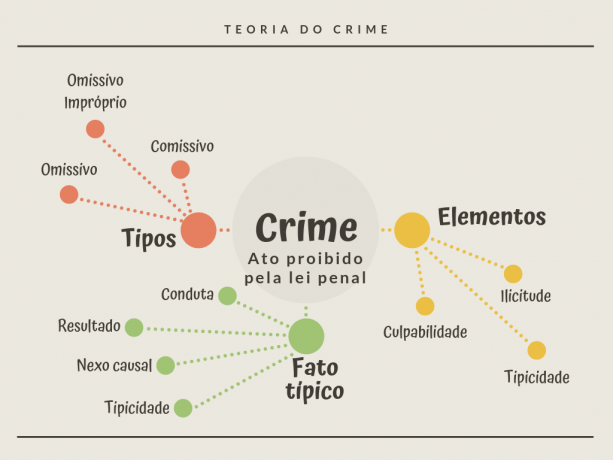Adhesive appeal is an appeal method through which a party that did not intend to appeal a court decision, only appeals because the other party appealed.
In technical terms, the adhesive feature is not an appeal, but a special way of filing other appeals that exist in Brazilian legislation. See the example below:
Example: In a certain case, João requires that Paulo pay him R$2,000 in moral damages. In the sentence, the judge ordered Paulo to pay R$1,200. Even though his request was not granted, João does not want to appeal, since the judgment of the appeal would take a long time and he prefers to receive R$1,200 soon.
Paulo, however, does not agree with the decision and appeals to the higher court. In this case, João (who will now have to wait for the decision on the appeal) has the option of, in addition to presenting brief, (response to the appeal), file its own appeal claiming the increase of the conviction to the original amount order. This feature will be sticky as it adheres to Paul's feature in a subordinate relationship.
The adhesive feature is subordinate to the main feature. This means that if the appealing party first withdraws the appeal or if the appeal is not admitted, the adhesive appeal will not proceed to judgment.
The adhesive feature is provided for in article 997 of the New Code of Civil Procedure:
Art. 997. Each party will file the appeal independently, within the deadline and in compliance with legal requirements.
§ 1 If the plaintiff and the defendant are defeated, the appeal filed by either of them may be accepted by the other.
§ 2 The adhesive appeal is subordinate to the independent appeal, and the same rules apply to it as to the requirements of admissibility and judgment in court, unless otherwise provided by law, also observing the Following:
I - it will be addressed to the body before which the independent appeal was filed, within the period that the party has to respond;
II - it will be admissible in the appeal, in the extraordinary appeal and in the special appeal;
III - it will not be known if the main appeal is withdrawn or if it is considered inadmissible.
What are the requirements for filing an adhesive appeal?
To be filed, the adhesive feature must meet some cumulative requirements, that is, it is necessary that all are met simultaneously. The requirements are:
reciprocal succumbence: in law, there is a loss of suit whenever one of the parties does not have its interest served by the decision. The loss of suit is necessary for the appeal to exist. For an adhesive appeal to be filed, it is necessary that both parties have been unsuccessful, that is, both have “lost”.
Independent appeal filing: A resource can only be sticky if there is another independent principal to which it will be bonded. Thus, an adhesive appeal will never be the first appeal filed in the process.
Existence of appeal, special appeal or extraordinary appeal filed: the list of resources provided for in article 997, paragraph 2, II of the New Code of Civil Procedure is exhaustive, therefore, the adhesive feature is only applicable in cases of appeal, special appeal or appeal extraordinary.
Filing within the response time for the main appeal: the deadline for filing the adhesive appeal is the same deadline for presenting the brief of the appeal, special appeal and extraordinary appeal, that is, 15 days.
Does the adhesive feature need preparation?
The adhesive feature also requires preparation to be processed.
In procedural law, preparation is the payment of costs related to the judgment of the appeal. Although there is no express provision in the New Code of Civil Procedure, the courts understand that there is a need for preparation so that the adhesive appeal is known. This requirement was expressed in the 1973 Code of Civil Procedure.
What is the deadline for filing the adhesive appeal?
The deadline for filing the adhesive appeal is 15 days, considering that this is the deadline for responding to appeals, special and extraordinary. In cases where the main appellant is the Public Ministry, the adhesive appeal will not have a double term.
Is the adhesive appeal applicable in the Special Civil Courts?
The adhesive feature it is not appropriate in the Special Civil Courts, for lack of legal provision in Law No. 9,099/95. According to decisions of the Federal Supreme Court, the subsidiary application of the Code of Civil Procedure is not applicable in this case, given that the courts have their own appeal rules.
Is the adhesive feature applicable in the Work Process?
The adhesive feature it is appropriate in the Labor Process, by the subsidiary application of common procedural law. However, the rules are different and are provided for in summary 283 of the Superior Labor Court:
Precedent 283 - The adhesive feature is compatible with the work process, where it fits, within 8 days, in the event of interposition of ordinary resource, in petition, in magazine it's from embargoes, it being unnecessary for the matter contained therein to be related to the appeal filed by the opposing party.
See too:
- extraordinary resource
- Motion for clarification
- Unnamed Resource
- Infringing embargoes
- succumbence
- Third party embargoes
- Motions to execution
- Recurrent

